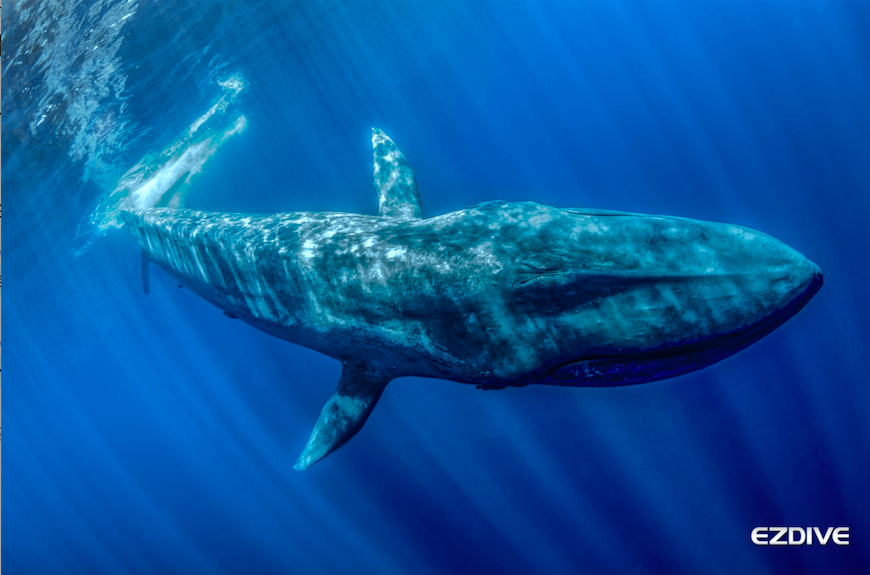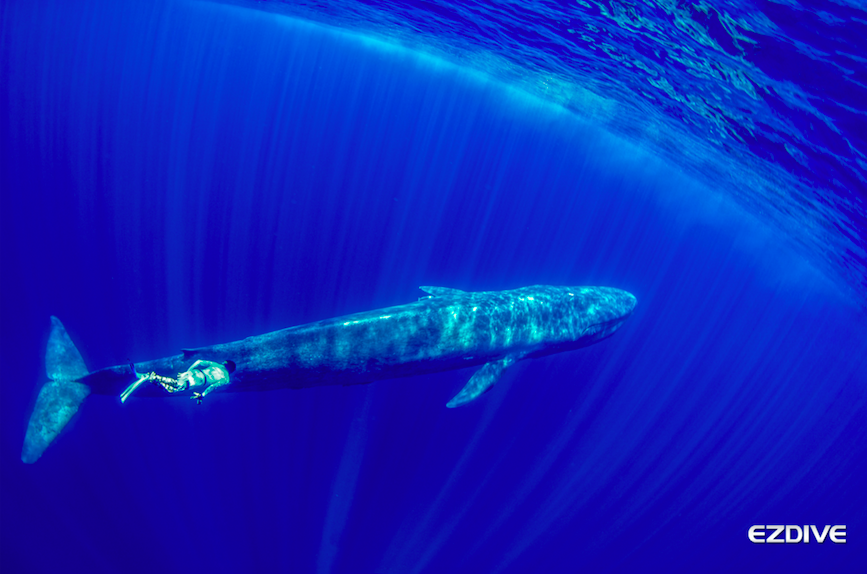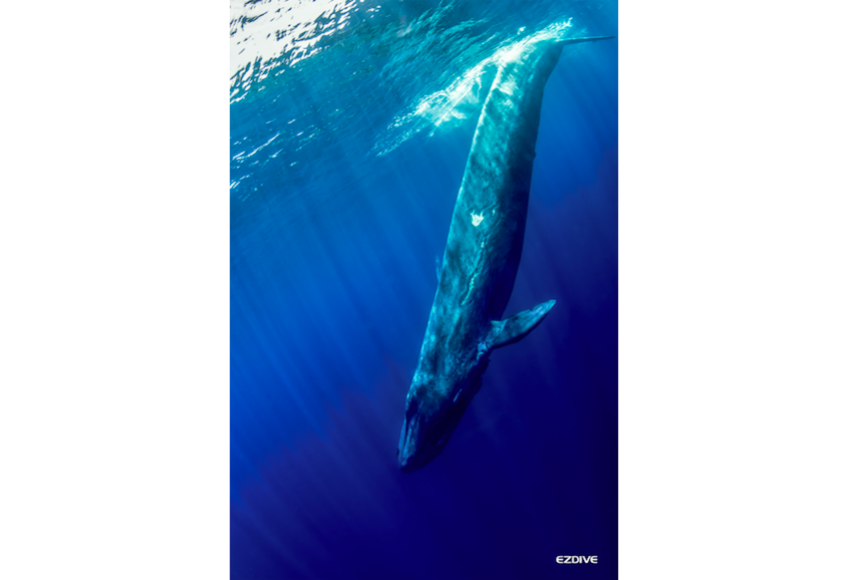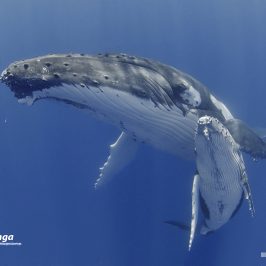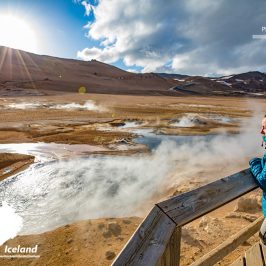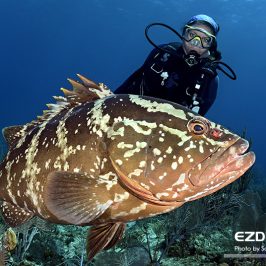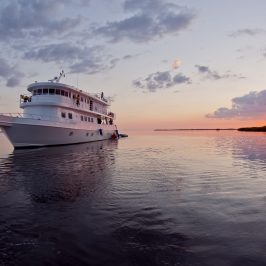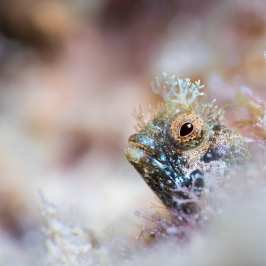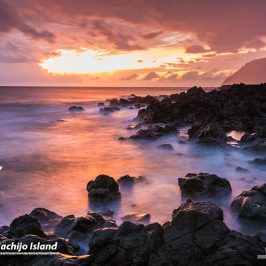After a four-month krill feed in Antarctic waters, migratory blue whales travel to their tropical breeding and birthing areas in the waters around Sri Lanka.
Text and Photo by Wayne Jones
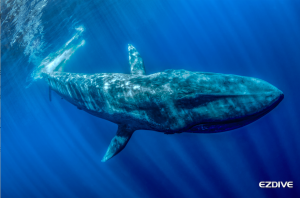 Blue whales seem solitary, though in a loosely defined pod as they spend their time at a distance from each other, while sperm whales spend their time in close proximity to others as they rub and tussle against each other while travelling through the water.
Blue whales seem solitary, though in a loosely defined pod as they spend their time at a distance from each other, while sperm whales spend their time in close proximity to others as they rub and tussle against each other while travelling through the water.
While it was the blue whales we came specifically to photograph, the outwardly curious nature of the sperm whale, make them pleasantly hard work to photograph as they steam-roll straight through like a heard of wild stallions.
Blue whales take your breath away. As the biggest animals to breathe oxygen on Earth, nothing can prepare you for that first encounter. Their silence is deafening as your mind attempts to validate what your eyes can see.
The open ocean conceals these gentle giants well, but as with all mammals, they must surface to breathe and this, just as it was for the whalers, is their Achilles heel. On surfacing, the burst of exhalation shoots a mist high into the sky and can be seen for some distance. “There she blows” would be the whaler’s cry and their unfortunate fate was sealed, and as for us, this is where the chase begins.
With the ability to travel at around 20 knots or 40km/h, it is quite an effort for the boats to come alongside the whales and keep up, let alone getting ahead, but all these makes for a thrilling ride.
The boatmen, keeping at a reasonable distance, try to position us in front of the amazingly powerful being, who now moves effortlessly beside us taking the seven or so deep breaths before diving deep once again to feed.
Coordinating with the boatman and guide on which side we’ll slip into the ocean from, we wait, long fins hanging over the side as we sit backwards in those hard seats, masks on, snorkel in mouth and clutching cameras tight on our laps.
The boat, now ahead of the whale, turns hard and the scream of the outboard motor abruptly killed. “Go! Go! Go!” Yells the guide as we try to slip quickly and quietly in and with a few kicks forward, the most awe-inspiring moment as one is face to face, with the biggest animal to ever live.
Kicking hard, forgetting the camera in hand, I just stare. In that moment I am consumed with wonder, that moment seems eternal. I watch as it dives down, mesmerized, until I hear a voice in my head – “Take photo, take photo.” I point the camera in the direction and squeeze…snap, snap, snap, I feel the shutter. “Air!” I kick long hard strokes as I watch this first encounter disappearing into the deep blue as I burst to the surface gasping in delight.
The sperm whales too, are a wild ride as we race to get in front of the galloping mob. Up to 10 sperms tightly packed together as they head somewhere in a hurry. The trick was to drop onto the water some ways ahead of them and wait as they rumble towards you.
Keeping an eye and following to the left or right, they would just keep coming either diving beneath you or barrel past you as you followed taking as many photos before they are gone. Then back into the boat, “hurry, hurry!” the guide and boatman yell.
After handing the camera to the boatman, with two hands push as you kick with your long fins and heave yourself up with a pirouette at the end landing on your butt as the outboard screams into life and off we go again, getting in front, drop into the water and wait for the pack of brumbies.
Apart from finding whales and placing us in front of them, the guides are also playing an important role in the conservation of these giants of the deep. As the blue whales dive, they raise their tails high into the air above. The guides equipped with dslr and long zoom lens capture images of these tails or flukes used to identify each individual whale. These are cross referenced with other fluke images for a greater understanding of their life cycles, geographic distribution and population growth or decrease. Hopefully this information will be used to ensure the longevity of these still endangered Earth beings.
The apex of diving with the whales have to be what we first assumed to be two whales. It was on our second last diving day that Tim Ho joined me on the boat. There was a number of sperm whales around and we had spent the morning doing drops in front of small pods. But this was occurring in the green water closer to shore; not the best for capturing good images due to organic matter in the water.
After several hours diving with sperm whales, we headed for the deep blue. Gayan our guide kept a lookout standing on the bow of our now bouncing boat as we slapped across the small waves looking for the telltale breath spouts or tail flukes – the Indian Ocean can be a big place to hide. We spent a long while seeing nothing but dolphins and fishing boats and as time went on, it was looking as though the day would end with unfulfilled opportunities.
That was until a spout and a rush of adrenalin filled my heart. Two blue whales together, we are excited – cameras locked and loaded, masks on, snorkel in mouth as we come to them slowing as we approach from the front.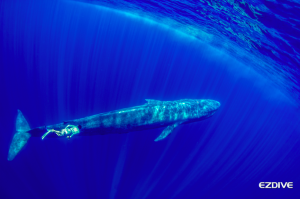
We slip, kicking hard but as silently as possible together, Tim Ho on my right, we move in as they come directly at us then split as they get close. Tim goes to the right as I go to the left watching above and below the water for a clear visual. Then from beneath I see as she slowly sinks down below the surface and turned to her right at only around 10m depth. She moves so very slowly, her eye watching me and seemingly unafraid. She has her calf tucked safely beneath her. I am quite close, moving slowly towards them as they, almost motionless, are looking back.
I squeeze away the housing trigger almost with a sense of intrusion even though she seems to share willingly feeling a sense of unity or oneness as in the silence we share this moment, then, as they drift off, I must unwillingly kick once again to the surface but now with a wondrous feeling of a connection shared.
This truly is a place where, for a short time each year, there can be an intimate connection between human and marine mammal. Between two intelligent beings who share a common home but are yet in different worlds. One can only hope the research being done and impact these still endangered whales in a most positive and enduring way.
Endangered Blue Whales
The whaling industry inflicted an immense toll the on blue whale populations in waters around Antarctica, nearly pushing the Antarctic species into extinction with an estimated 360,000 Antarctic blue whales killed by the 20th century.
By the time a ban on whaling was imposed in 1966, only 360 individuals survived, raising concerns over their ability to rebound to viable species in numbers.
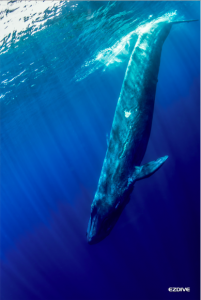 How to get there
How to get there
Flights are available from most Asian major airports to Colombo, Sri Lanka.
Visa
Most citizens from Asian countries can apply for online eta visa. www.eta.gov.lk/
Language
Sinhala, Tamil, and English.
Currency
1 Sri Lankan rupee (LKR) equals around 0.0066 USD
Electricity
Type “D” socket connection, 220 – 240vSri

